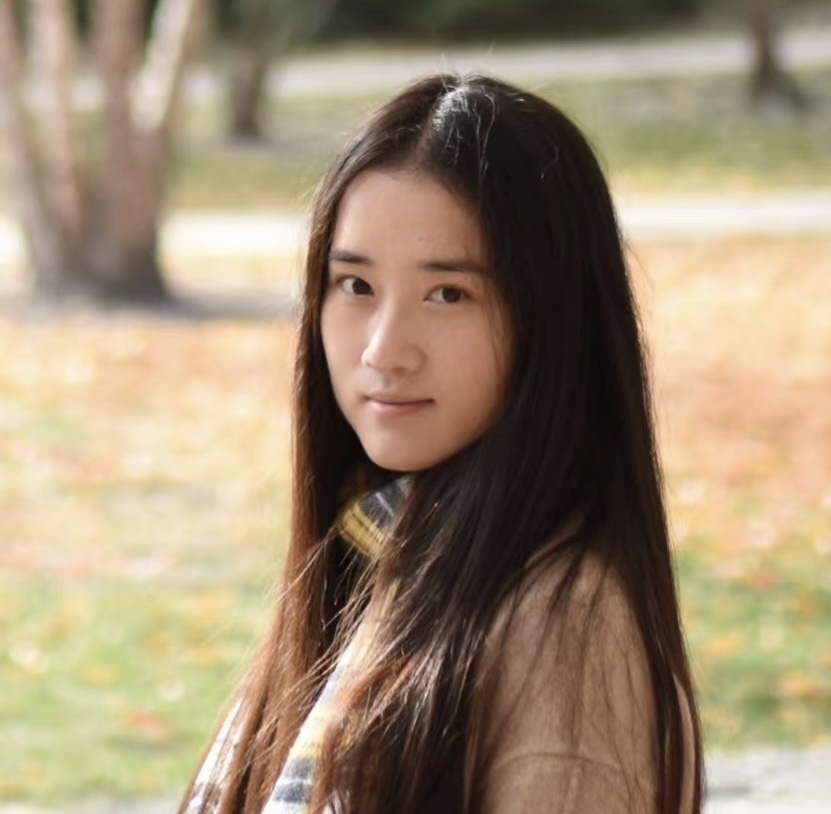
Rui An
I am currently a postdoctoral fellow at USC. My research interests focus on cosmology, dark matter and dark energy.

I am currently a postdoctoral fellow at USC. My research interests focus on cosmology, dark matter and dark energy.
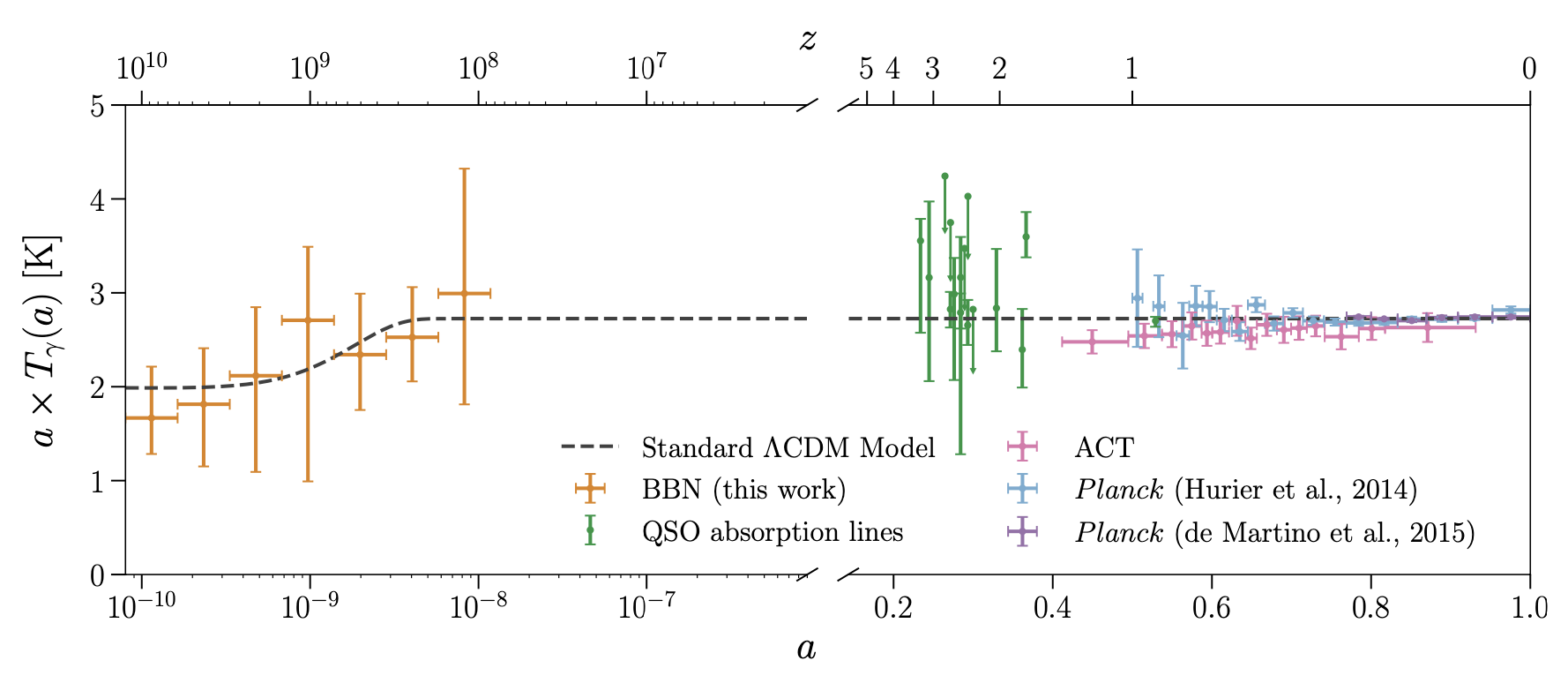
We present a model-independent reconstruction of the early expansion and thermal histories of the universe, obtained from light element abundance measurements. Our results provide clarity on the most fundamental properties of the early universe, reconstructed with minimal assumptions about the unknown physics that can occur at keV–MeV energy scales and can be mapped to broad classes of models of interest to cosmology.
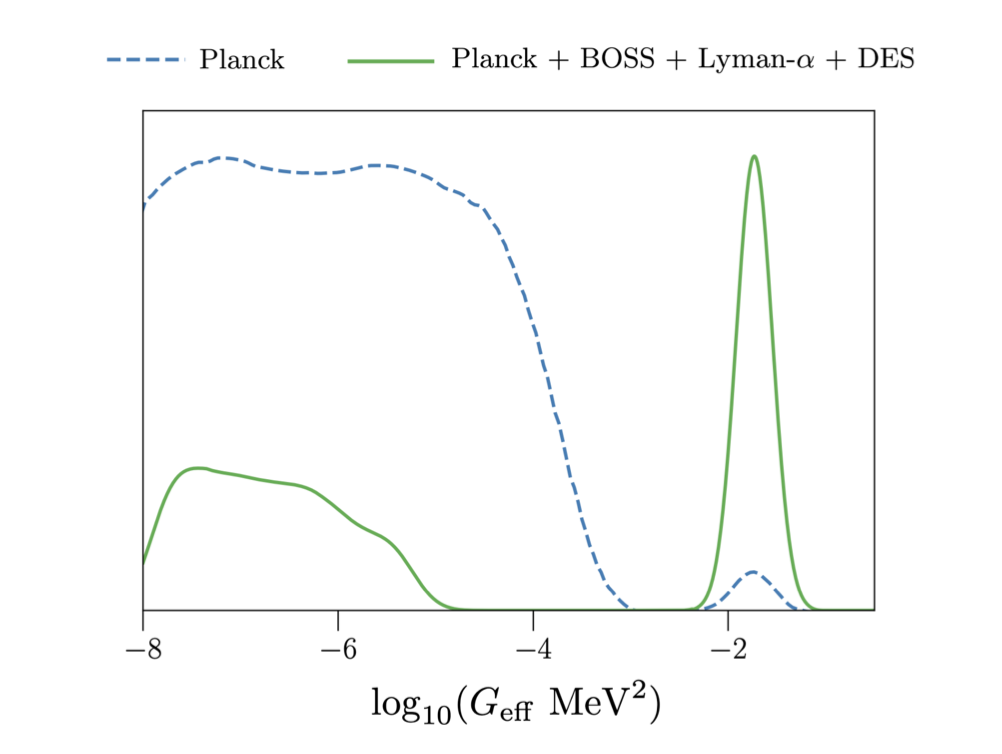
We explore a self-interacting neutrino cosmology in which neutrinos experience a delayed onset of free streaming. Using the effective field theory of large-scale structure, we perform the first combined likelihood analysis of BOSS full-shape galaxy clustering, weak lensing, and Lyman-α forest measurements, together with the cosmic microwave background temperature and polarization anisotropy data from Planck, in search for evidence of neutrino self-interactions.
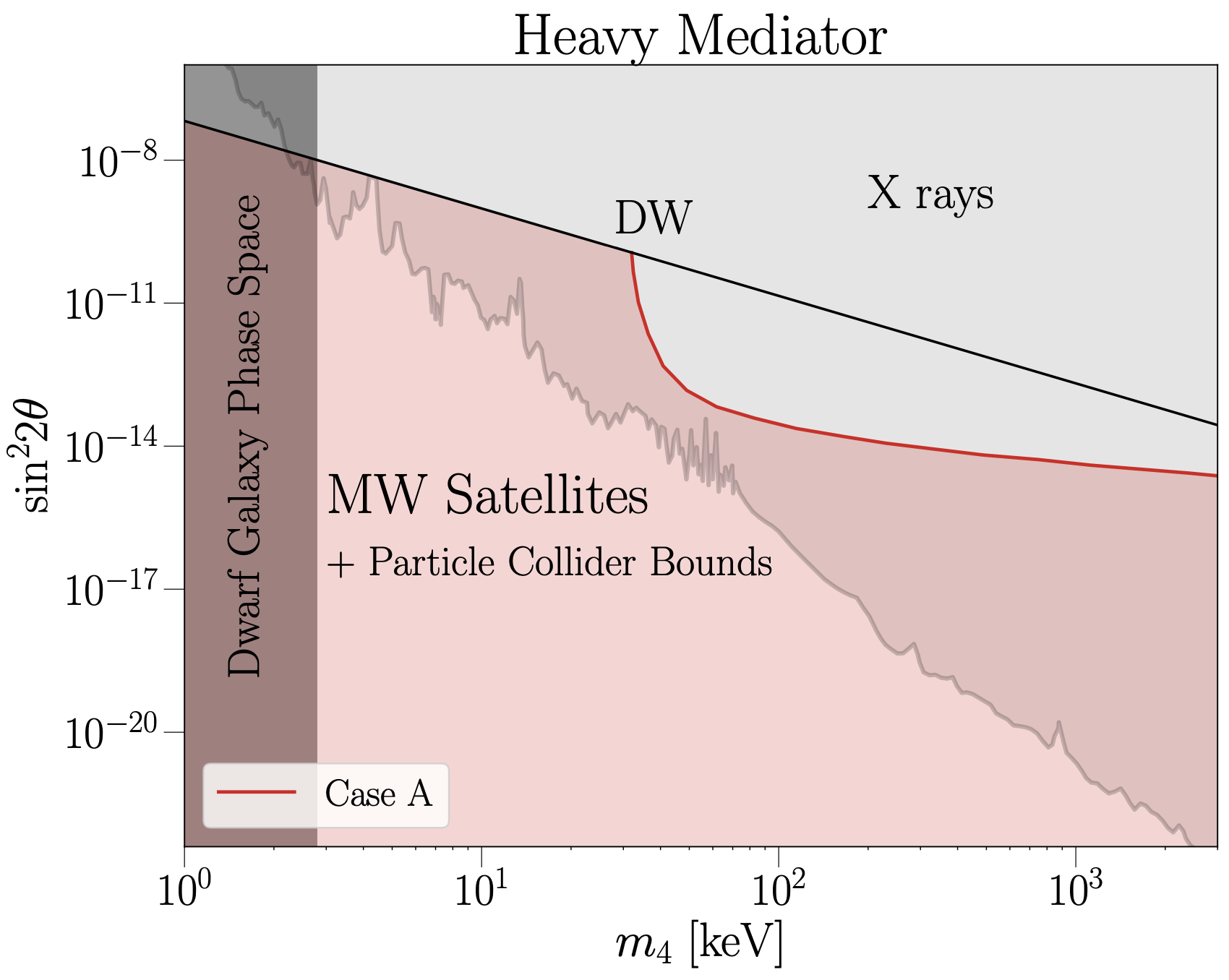
Sterile neutrinos produced through self-interactions of active neutrinos have received attention as a particle candidate that can yield the entire observed DM relic abundance without violating the most stringent constraints from X-ray observations. We examine consistency of this production mechanism with the abundance of small-scale structure in the universe, as captured by the population of ultra-faint dwarf galaxies orbiting the Milky Way.
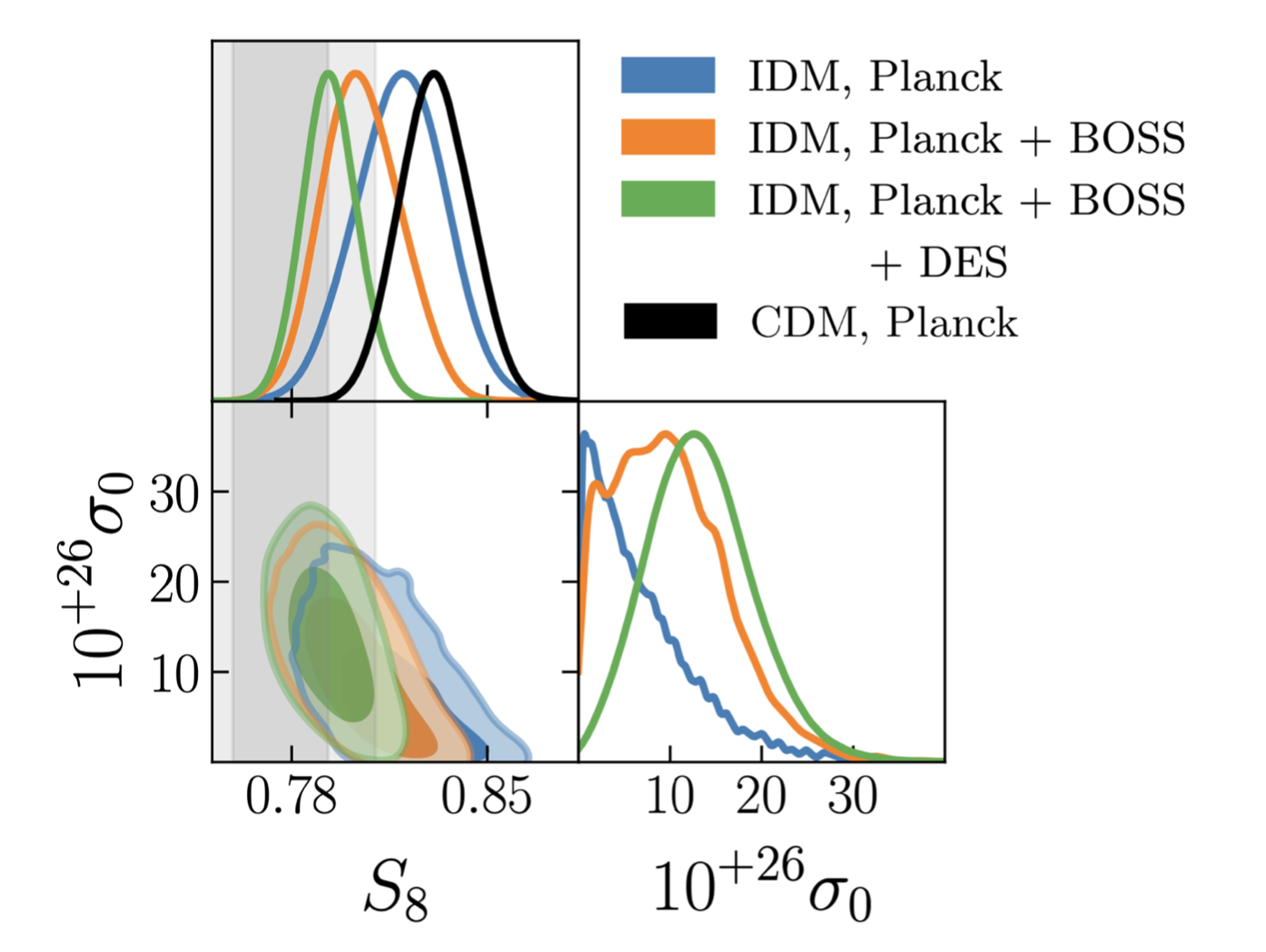
We explore an interacting dark matter (IDM) model that allows for a fraction of dark matter to undergo velocity-independent scattering with baryons. Using the effective field theory of large-scale structure, we perform the first systematic analysis of BOSS full-shape galaxy clustering data for the IDM scenario, and we find that this model ameliorates the S8 tension between large-scale structure and Planck data.
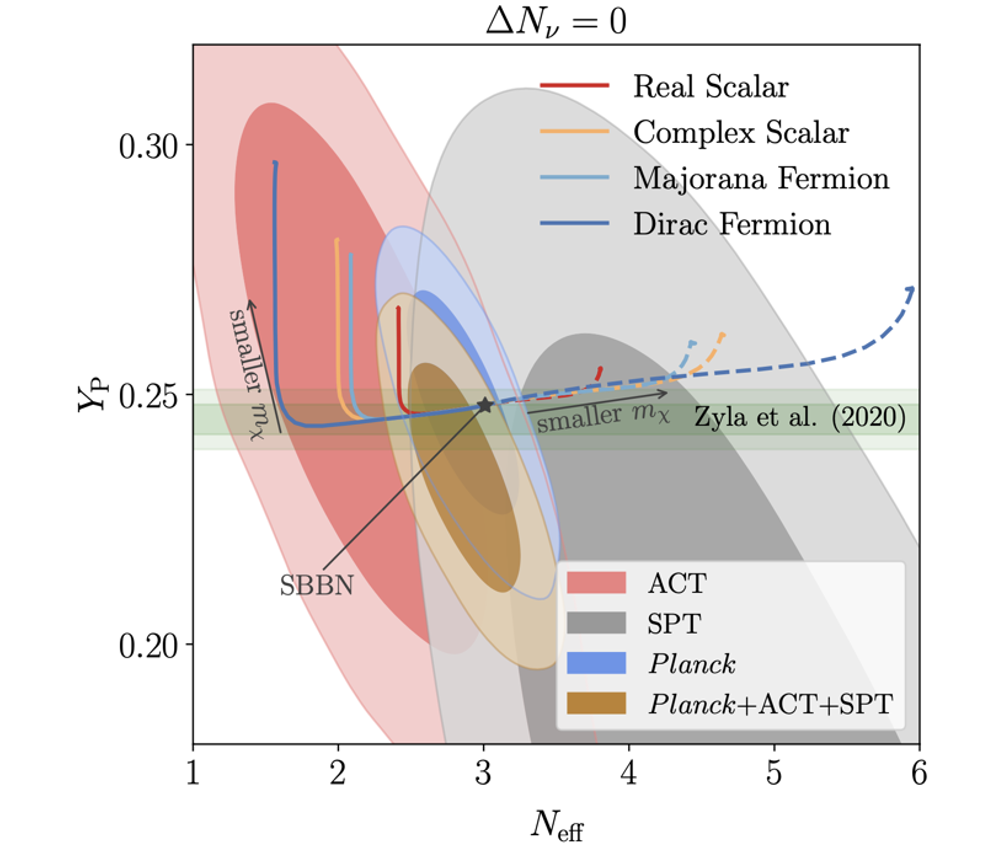
The presence of light thermally coupled dark matter affects early expansion history and production of light elements during the Big Bang Nucleosynthesis. Specifically, dark matter that annihilates into Standard Model particles can modify the effective number of light species in the universe Neff, as well as the abundance of light elements created buring BBN. These quantities in turn affect the cosmic microwave background anisotropy. We present the first joint analysis of small-scale temperature and polarization CMB anisotropy from ACT and SPT, together with Planck data and the recent primordial abundance measurements to place comprehensive bounds on the mass of light thermal-relic dark matter.
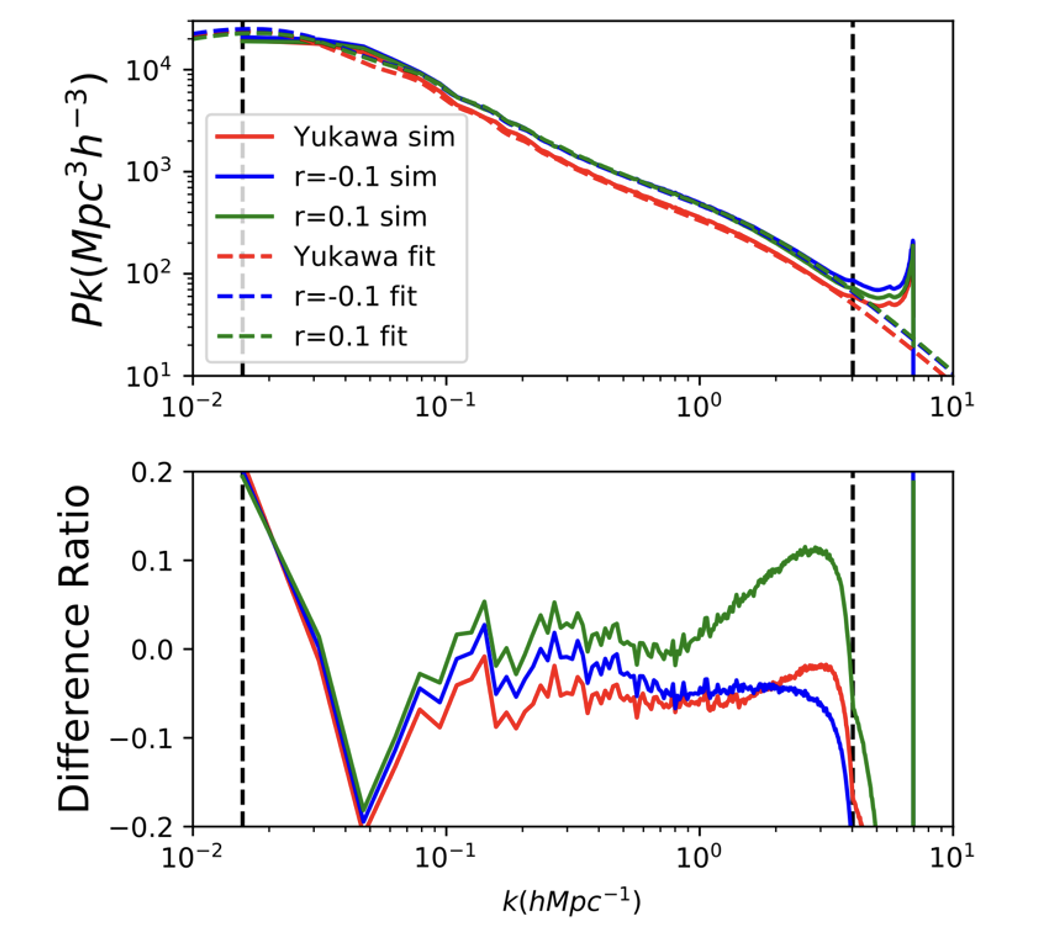
We consider a quintessence model with Yukawa interaction between dark energy and dark matter and constrain this model by employing the recent cosmological data. We find that an interaction in the dark sector is compatible with observations. The Yukawa interaction model is found to be moderately favored by Planck and able to alleviate the discordance between weak lensing measurements and CMB measurements as previously inferred from the standard ΛCDM model. N-body simulations for Yukawa interaction model is also performed. We find that using the halo density profile is plausible to improve the constraints significantly in the future.

We combine constraints from linear and nonlinear scales, for the first time, to study the interaction between dark matter and dark energy. By comparing our simulation results with the SDSS galaxy-galaxy weak lensing measurements, we point to plausible improvements on the constraints of interaction strength by using small scale information from weak lensing, comparing to the previous studies using linear examinations.
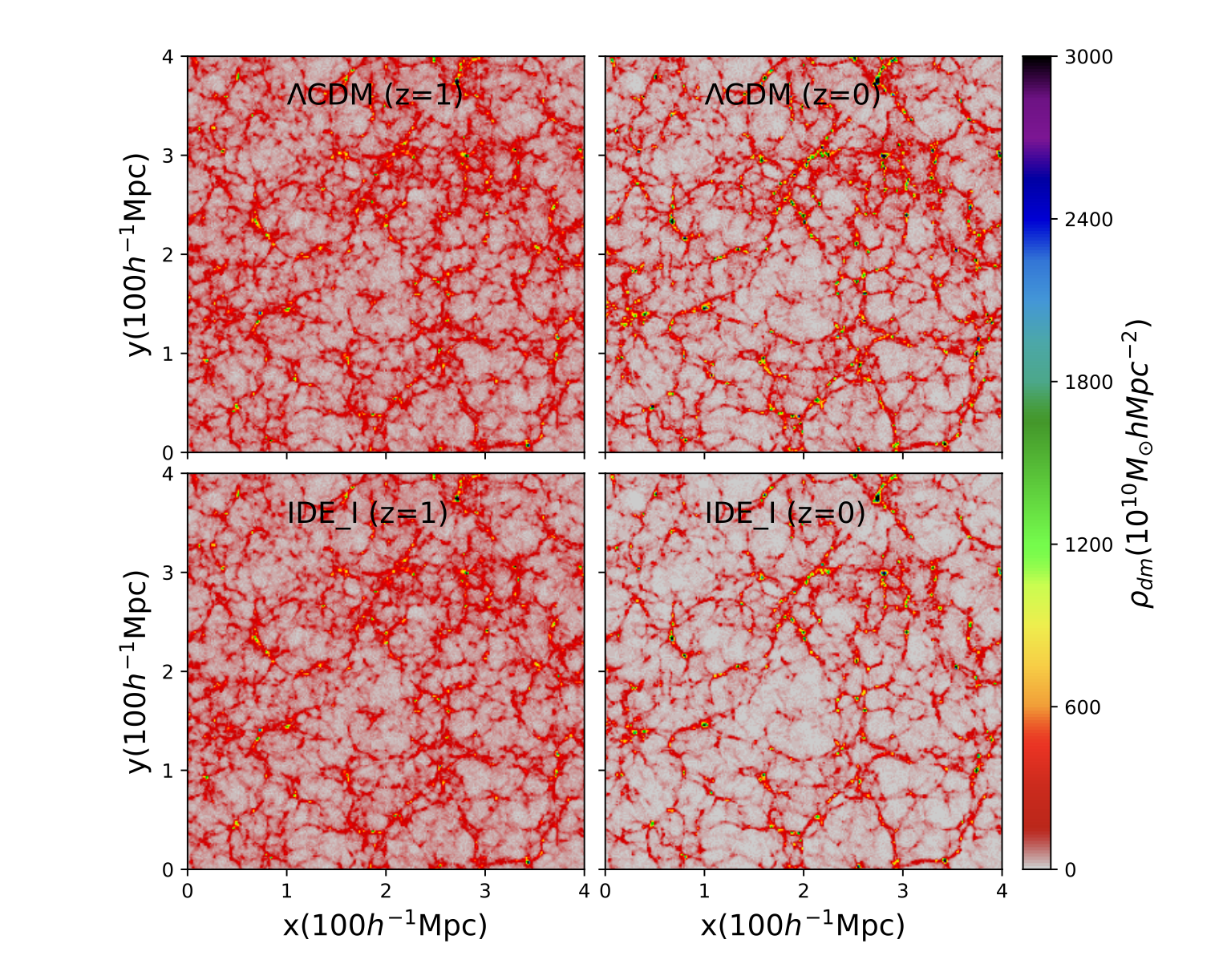
We devise a fully self-consistent simulation pipeline for the first time to study the interaction between dark matter and dark energy. We perform convergence tests and show that our code is accurate on different scales. Using the parameters constrained by Planck, Type Ia Supernovae, Baryon Acoustic Oscillations and Hubble constant observations, we perform cosmological N-body simulations. We calculate the resulting matter power spectra and halo mass functions for four different interacting dark energy models. In addition to the dark matter density distribution, we also show the inhomogeneous density distribution of dark energy.

We constrain interacting dark matter and dark energy (IDMDE) models using a 450-degree-square cosmic shear data from the Kilo Degree Survey (KiDS) and the angular power spectra from Planck’s latest cosmic microwave background measurements. We revisit the discordance problem in the standard Lambda cold dark matter (ΛCDM) model between weak lensing and Planck datasets and extend the discussion by introducing interacting dark sectors. The IDMDE models are found to be able to alleviate the discordance between KiDS and Planck as previously inferred from the ΛCDM model, and moderately favored by a combination of the two datasets.
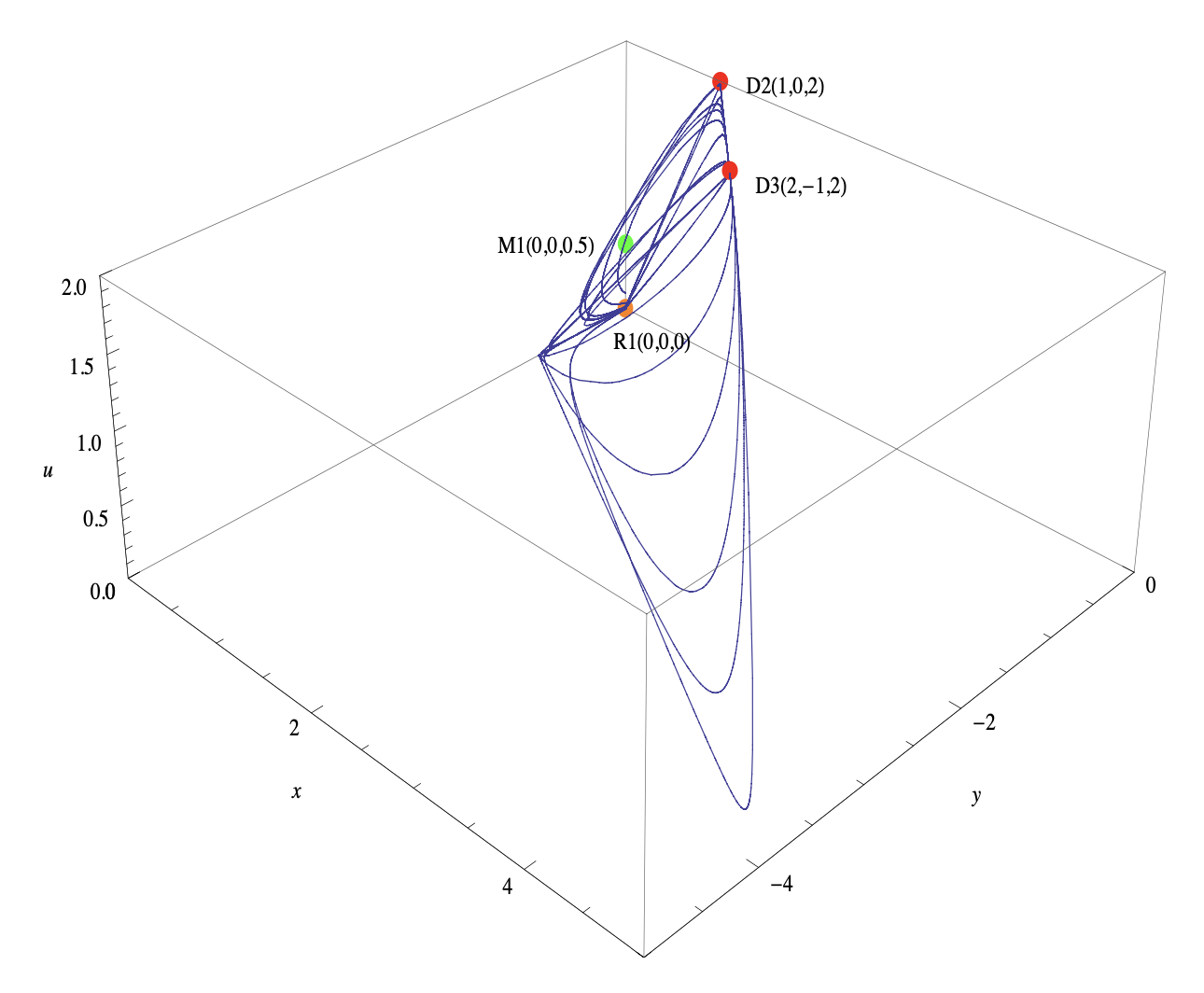
We perform a phase space analysis of a generalized modified gravity theory with nonminimally coupling between geometry and matter. We prove that there is an attractor solution to describe the late time accelerating universe when the modified gravity is chosen in a simple power-law form of the curvature scalar. Confronting the model with supernova type Ia data sets, we find that the nonminimally coupled theory of gravity is a viable model to describe the late time Universe acceleration.